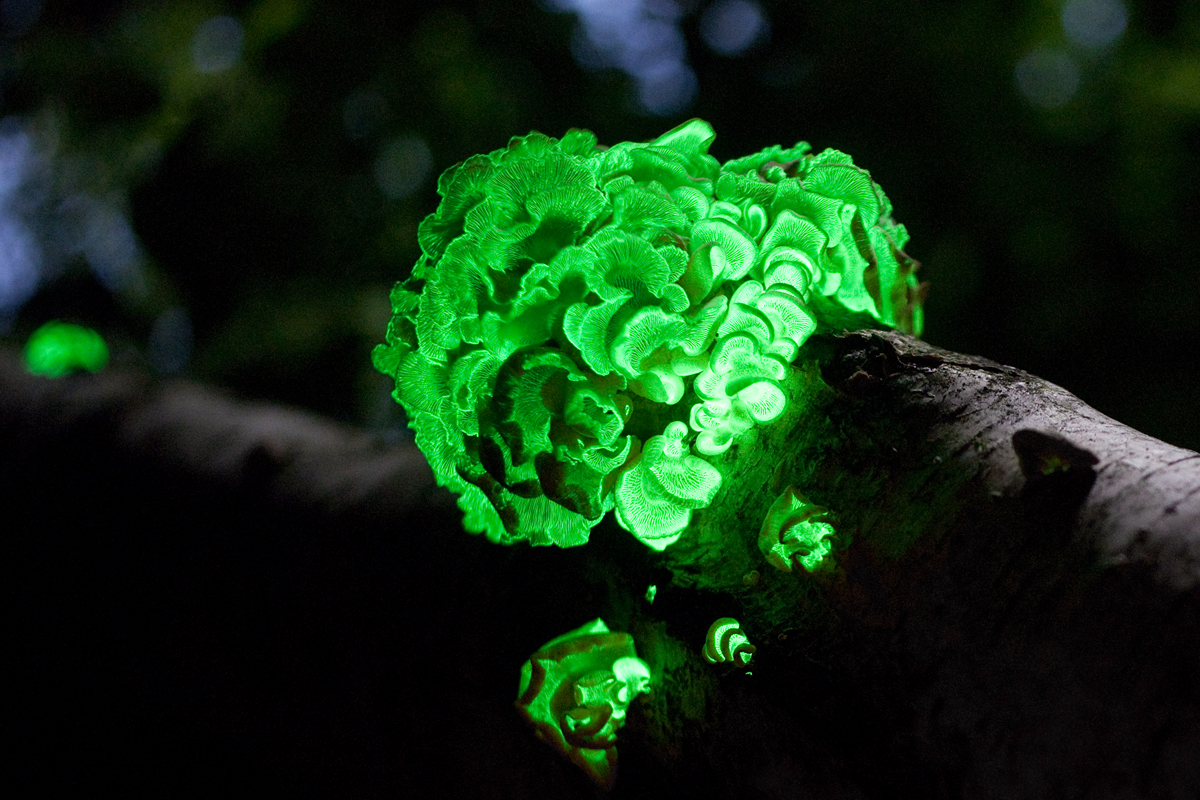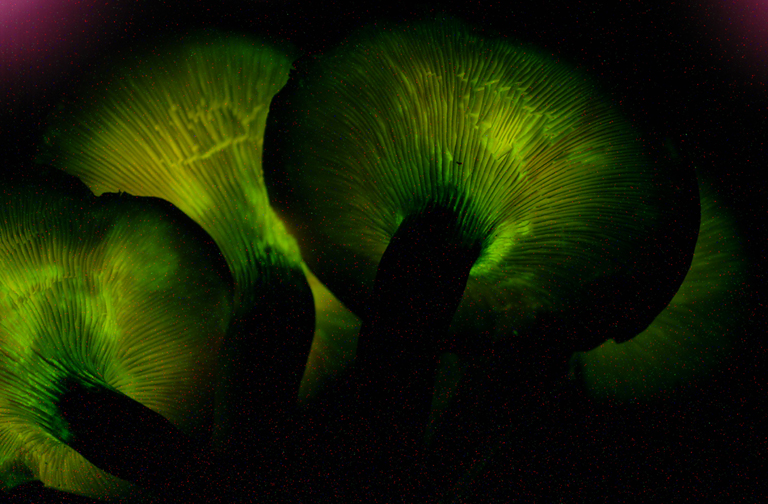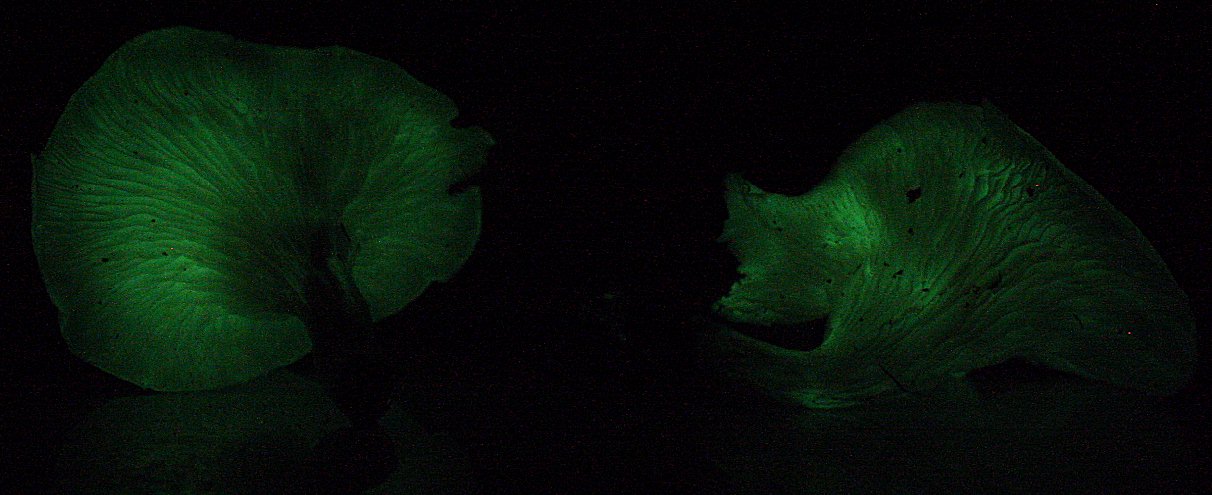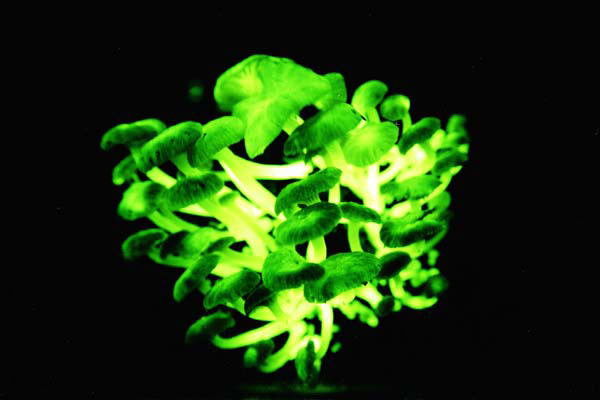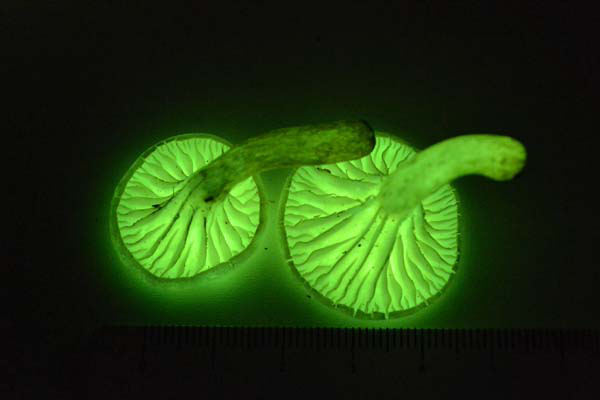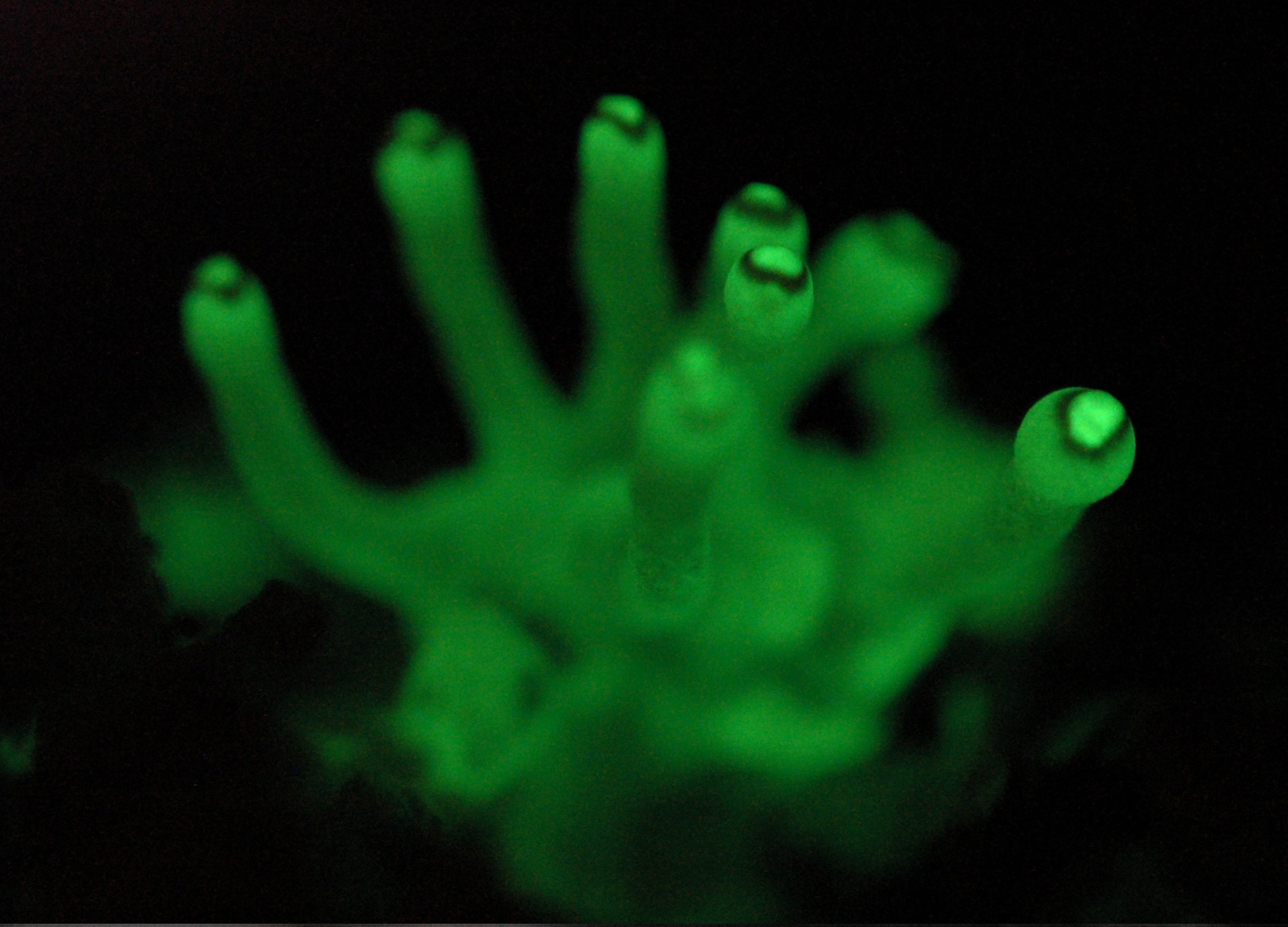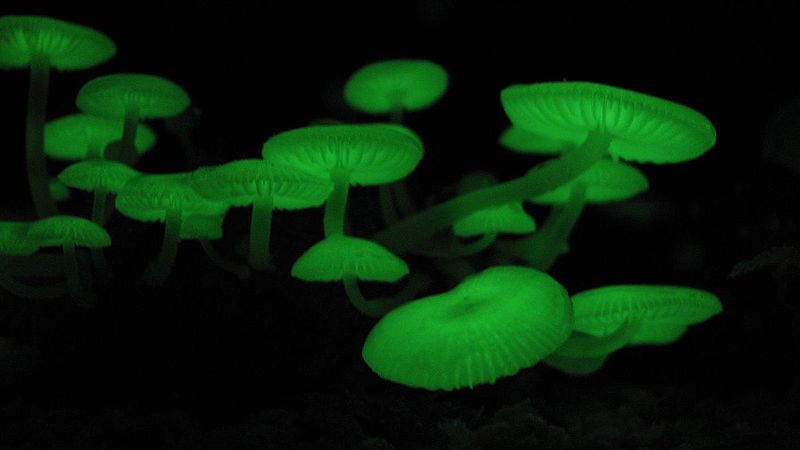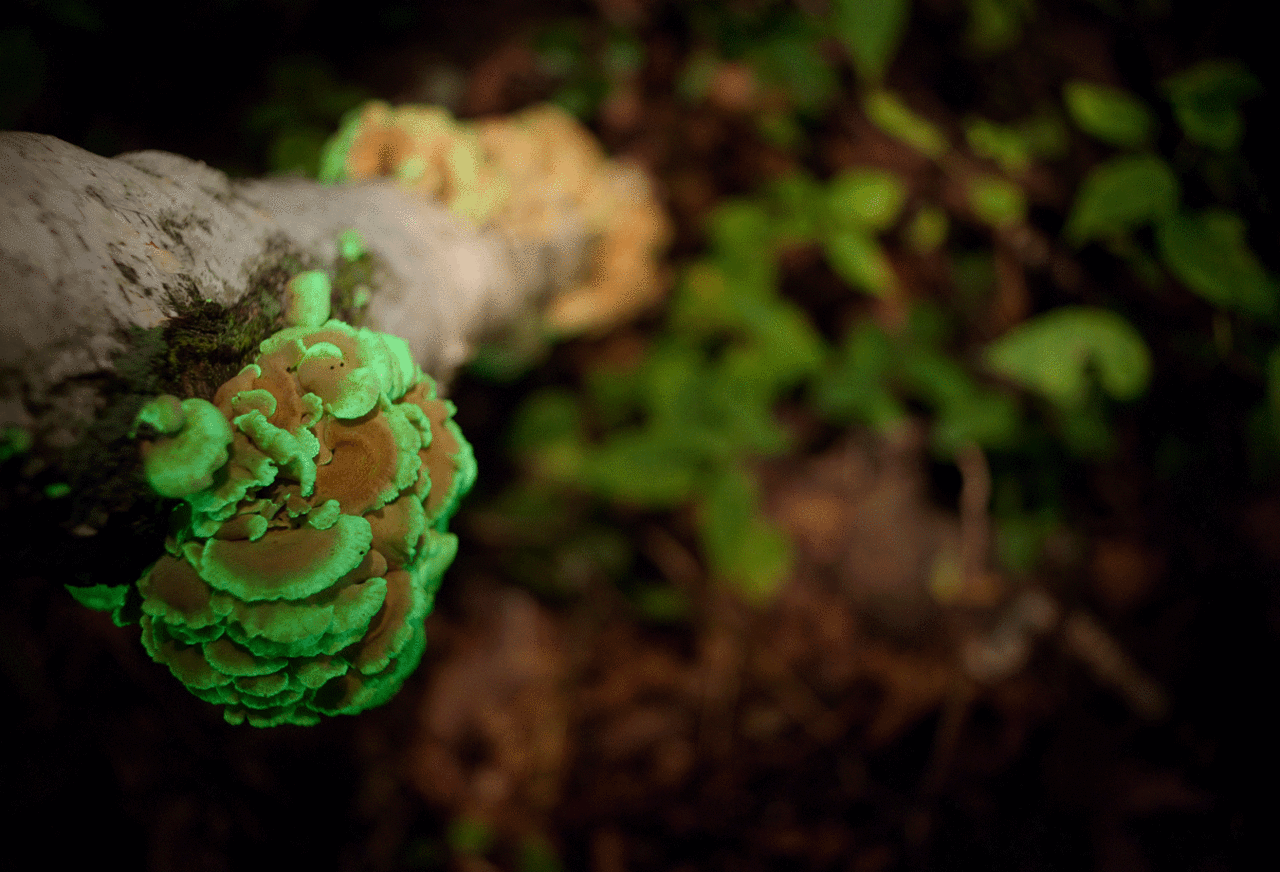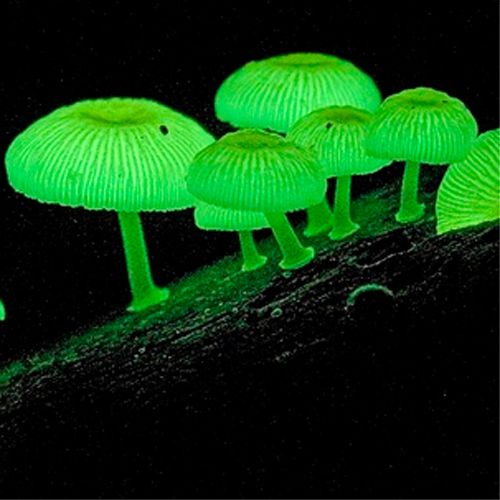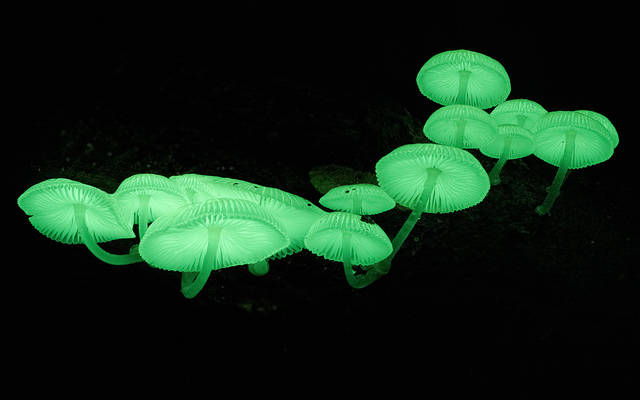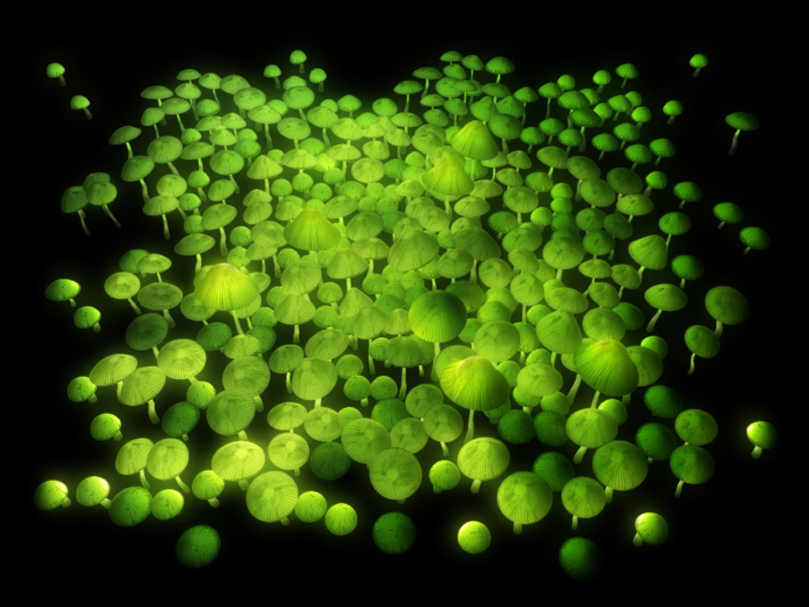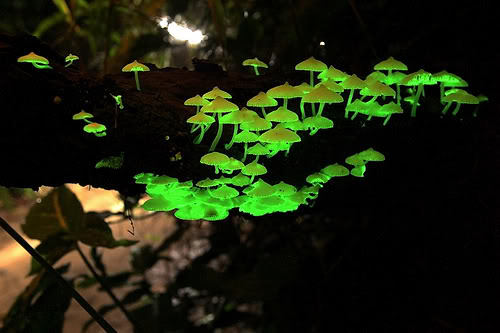Foxfire: Putting The “Fun” Back In Fungus
Foxfire is nothing to do with foxes or fires, just to get that straight from the start. It’s actually a type of bioluminescence produced by certain fungi that live in decaying wood. Also known as “fairy fire” it presents itself as a green-blue glow coming from rotten tree stumps at certain times of the year.
What is this attractive foxfire for? There are three theories, which aren’t mutually exclusive; firstly, the glow might be used to persuade insects to draw near. Once in the vicinity the insects pick up fungal spores and transport them near and far. Secondly. foxfire might dissuade peckish grazers from taking a nibble. Thirdly, there is a theory that the process of producing bioluminescence has an antioxidant effect, helping to clear up free radicals that have built up in the fungus.
At least 40 species of glowing fungi have now been recorded; some glow from underneath the fruiting caps, others emit the ghostly light from mycelial strands and some have glowing spores.
The light, which is generally dim, but on rare occasions has been reported bright enough to read by, is caused by an enzyme – luciferase.
Luciferases are a group of oxidative enzymes, they are present in many bioluminescent species from fireflies to bacteria and from mushrooms to fish. One way of understanding bioluminescence is to think of it as the reverse of photosynthesis. In photosynthesis, an organism uses light and CO2 to make organic materials and release oxygen. In bioluminescence, light and CO2 are released by breaking apart organic materials using oxygen.
Foxfire has been mentioned in literature throughout history, which is no surprise I suppose: if you were walking through the woods at night and some of it was glowing blue you might well take note. The oldest recorded foxfire sighting was by Aristotle in 382 BC. Pliny the Elder also mentioned it c. 50 AD. The actual cause of foxfire was only discovered in 1823 when glowing beams in mine shafts were investigated.
The name “foxfire” may derive from the Old French word fols meaning false, but the association of foxes appears in other cultures, including the Japanese. So perhaps there’s more to the etymology than meets the ears.
When And Where To See Foxfire
Foxfire is relatively uncommon, but there are a few ways to up your chances of seeing the spectacle. Most species of bioluminescent fungus are found in the tropics, but not all, we have some over here in the UK.
The best time of year to see foxfire is the autumn when the fungus is sporing. It will always occur on rotting tree trunks or branches on the forest floor. The wood must be moist because the reaction needs water, but they can’t be completely soaked because without oxygen the reaction will be extinguished.
The optimum temperature for bioluminescence in Armillaria (one of the most common families of glowing fungus, found throughout North America, Europe and Asia) is 25°C but it has been observed as low as 1°C.
Armillaria pumps out its bioluminescence according to daily rhythms, the foxfire burns brightest at 7:30 pm and weakest at 7:30 am.
Growing Bioluminescent Foxfire Mushrooms
If, like me, you are immediately considering growing some of your own glow in the dark mushrooms I have a couple of links for you. I’m guessing it’s not as easy as growing daisies or grass, fungus are notoriously difficult to please in foreign environments, but it has to be worth a shot.
Also, the bioluminescence produced may disappoint, the images shown here have been taken with long exposures, as mentioned above, the light is generally pretty dim. But imagine having your garden path delineated by a bunch of glowing spores. It would be amazing.
You can buy grow your own light up shrooms from here, here and here.
If you can’t be bothered to grow your own, here are a few more unearthly pictures:
MORE:
CORDYCEPS: NATURE’S MOST BRUTAL FUNGUS
WEIRD COLLECTION OF STAMPS WITH FUNGUS ON THEM

